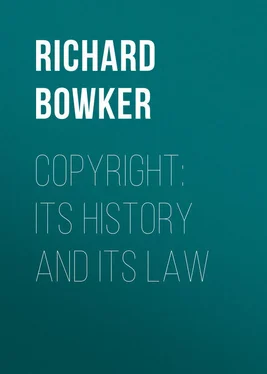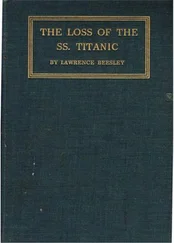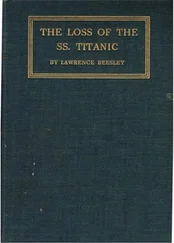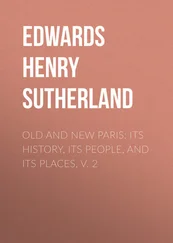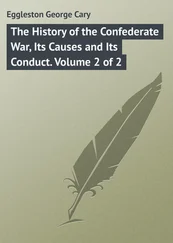Richard Bowker - Copyright - Its History and Its Law
Здесь есть возможность читать онлайн «Richard Bowker - Copyright - Its History and Its Law» — ознакомительный отрывок электронной книги совершенно бесплатно, а после прочтения отрывка купить полную версию. В некоторых случаях можно слушать аудио, скачать через торрент в формате fb2 и присутствует краткое содержание. ISBN: , Жанр: foreign_antique, foreign_prose, Историческая проза, на английском языке. Описание произведения, (предисловие) а так же отзывы посетителей доступны на портале библиотеки ЛибКат.
- Название:Copyright: Its History and Its Law
- Автор:
- Жанр:
- Год:неизвестен
- ISBN:http://www.gutenberg.org/ebooks/39502
- Рейтинг книги:3 / 5. Голосов: 1
-
Избранное:Добавить в избранное
- Отзывы:
-
Ваша оценка:
- 60
- 1
- 2
- 3
- 4
- 5
Copyright: Its History and Its Law: краткое содержание, описание и аннотация
Предлагаем к чтению аннотацию, описание, краткое содержание или предисловие (зависит от того, что написал сам автор книги «Copyright: Its History and Its Law»). Если вы не нашли необходимую информацию о книге — напишите в комментариях, мы постараемся отыскать её.
Copyright: Its History and Its Law — читать онлайн ознакомительный отрывок
Ниже представлен текст книги, разбитый по страницам. Система сохранения места последней прочитанной страницы, позволяет с удобством читать онлайн бесплатно книгу «Copyright: Its History and Its Law», без необходимости каждый раз заново искать на чём Вы остановились. Поставьте закладку, и сможете в любой момент перейти на страницу, на которой закончили чтение.
Интервал:
Закладка:
Copyright: Its History and Its Law
FOREWORD
Copyright progress
The American copyright code of 1909, comprehensively replacing all previous laws, a gratifying advance in legislation despite its serious restrictions and minor defects, places American copyright practice on a new basis. The new British code, brought before Parliament in 1910, and finally adopted in December, 1911, to be effective July 1, 1912, marks a like forward step for the British Empire, enabling the mother country and its colonies to participate in the Berlin convention. Among the self-governing Dominions made free to accept the British code or legislate independently, Australia had already adopted in 1905 a complete new code, and Canada is following its example in the measure proposed in 1911, which will probably be conformed to the new British code for passage in 1912. Portugal has already in 1911 joined the family of nations by adherence to the Berlin convention, Russia has shaped and Holland is shaping domestic legislation to the same end, and even China in 1910 decreed copyright protection throughout its vast empire of ancient and reviving letters. The Berlin convention of 1908 strengthened and broadened the bond of the International Copyright Union, and the Buenos Aires convention of 1910, which the United States has already ratified, made a new basis for copyright protection throughout the Pan American Union, both freeing authors from formalities beyond those required in the country of origin. Thus the American dream of 1838 of "a universal republic of letters whose foundation shall be one just law" is well on the way toward realization.
Field for the present treatise
In this new stage of copyright development, a comprehensive work on copyright seemed desirable, especially with reference to the new American code. Neither Eaton S. Drone nor George Haven Putnam were disposed to enter upon the task, which has therefore fallen to the present writer. He hopes that his participation for the last twenty-five years in copyright development, – during which, as editor of the Publishers' Weekly and of the Library Journal , he has had occasion to keep watch of copyright progress, and as vice-president of the American (Authors) Copyright League, he has taken part in the copyright conferences and hearings and in the drafting of the new code, – will serve to make the present volume of use to his fellow members of the Authors Club and to like craftsmen, as well as to publishers and others, and aid in clarifying relations and preventing the waste and cost of litigation among the coördinating factors in the making of books and other forms of intellectual property.
Authorities and acknowledgments
The present work includes some of the historical material of the Bowker-Solberg volume of 1886, "Copyright, its law and its literature." This material has been verified, extended and brought up to date, especially in the somewhat detailed sketch of the copyright discussions and legislation resulting in the "international copyright amendment" of 1891 and the code of 1909. The volume is in this respect practically, and in other respects entirely new. It has had the advantage of the cordial co-operation of the copyright authorities at Washington, especially the Librarian of Congress, Herbert Putnam, and the Register of Copyrights, Thorvald Solberg; also of helpful courtesy from the Canadian Minister of Agriculture in the recent Laurier administration, Sidney Fisher, and the Canadian Registrar of Copyrights, P. E. Ritchie, and of Prof. Ernest Röthlisberger, editor of the Droit d'Auteur , and one of the best authorities on international copyright. This acknowledgment of obligation is not to be taken as assuming for the work official sanction and authority, though so far as practicable, it reflects the opinions of the best authorities. The writer has also consulted freely – but it is hoped always within the limits of "fair use" – the best law book writers, especially Drone, Copinger, Colles and Hardy, and MacGillivray, to whom acknowledgment is made in the several chapters. Acknowledgment is also made for the courtesies of Sir Frederick Macmillan, G. Herbert Thring, secretary of the British Society of Authors, and others numerous beyond naming. But most of all the writer is indebted to the intelligent and capable helpfulness of Carl L. Jellinghaus, who as private secretary, has been both right hand and eyes to the writer, and besides participating in the work of research, is largely responsible for the index and other "equipment" of the volume.
Method and form
Copyright law is exceptionally confused and confusing, and even the new American and British codes are not without such defects. Specific subjects are so interdependent that it has been difficult to make clear lines of division among the several chapters, and there is necessarily repetition; it has been the endeavor to concentrate the main discussion in one place, designated in the index by black face figures, with subordinate references in other chapters. Ambiguities in the text of this volume often reflect ambiguities in the laws, particularly of foreign countries. Where acts, decisions, etc., are quoted in the text or given in the appendix, spelling, capitalization, punctuation, headings, etc., follow usually the respective forms, thus involving apparent inconsistencies. Side-headings in the appendix follow usually the official form, unless shortened to prevent displacement. Translations of foreign conventions follow usually the official text of the translation, but have been corrected or conformed in case of evident error or variance. Citation of cases is confined for the most part to ruling or recent cases or those of historic importance or interest. Though it has not been practicable to verify statements from the copyright laws of so many countries in divers languages, a fairly comprehensive and accurate statement of the status of copyright throughout the world is here presented. The present work, originally planned for publication in 1910, has been held back and alterations and insertions made to bring the record of legislation to the close of 1911. For those who wish to keep their copyright knowledge up to date, the Publishers' Weekly will endeavor to present information as to the English speaking world, and the monthly issues of the Droit d'Auteur of Berne, under the editorship of Prof. Röthlisberger, will be found a comprehensive and adequate guide.
Advocates of authors' rights
The preparation of this work brings a recurring sense of the losses which the copyright cause has suffered during the long campaign for copyright reform, beginning in the American Copyright League, under the presidency of James Russell Lowell, and continued under that of Edmund Clarence Stedman, both of whom have passed over to the majority. Bronson Howard, always active in the counsels of the League as a vice-president, and the foremost advocate of dramatic copyright as president of the American Dramatists Club, failed, like Stedman, to see the fulfillment of his labors in the passage of the act of 1909. George Parsons Lathrop, Edward Eggleston, Richard Watson Gilder, "Mark Twain" and other ardent advocates of the rights of the author, gave large share of enthusiasm and effort to the cause. Happily the two men who for the last twenty years and more have labored at the working oar for the Authors League and for the Publishers League, are still active in the good work, ready to defend the code against attack and eager to forward every betterment that can be made; to Robert Underwood Johnson, the successor of the lamented Gilder as editor of the Century, and to George Haven Putnam, the head of the firm which still bears the name of his honored father, authors the world over owe in great measure the progress which has been made in America toward a higher ideal for the protection of authors' rights.
Читать дальшеИнтервал:
Закладка:
Похожие книги на «Copyright: Its History and Its Law»
Представляем Вашему вниманию похожие книги на «Copyright: Its History and Its Law» списком для выбора. Мы отобрали схожую по названию и смыслу литературу в надежде предоставить читателям больше вариантов отыскать новые, интересные, ещё непрочитанные произведения.
Обсуждение, отзывы о книге «Copyright: Its History and Its Law» и просто собственные мнения читателей. Оставьте ваши комментарии, напишите, что Вы думаете о произведении, его смысле или главных героях. Укажите что конкретно понравилось, а что нет, и почему Вы так считаете.
